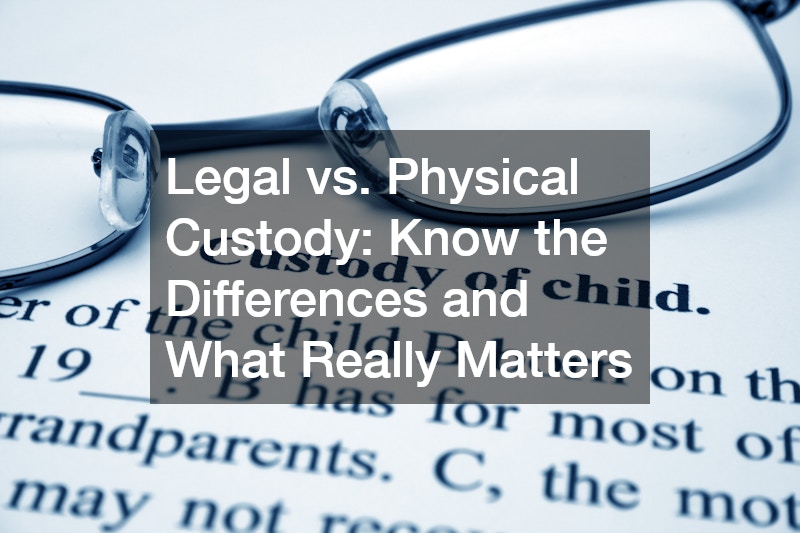
When dealing with custody arrangements during a separation or divorce, understanding the distinction between legal and physical custody is essential. Many parents find themselves confused about these terms, leading to misconceptions about what each type of custody entails and how they impact parenting time.
Understanding Legal Custody
Legal custody refers to the right to make major decisions concerning a child’s upbringing. This includes decisions about medical care, education, religion, and personal care. For example, decisions regarding whether a child should undergo surgery, attend a specialized school, or get a tattoo fall under legal custody.
This aspect of custody determines who has the authority to make these significant choices on behalf of the child.
Legal custody can be shared, meaning both parents have an equal say in these major decisions. In cases of joint legal custody, parents must collaborate and come to mutual agreements on important issues affecting their child’s life. If one parent has sole legal custody, they alone make these critical decisions, although it’s still advisable for them to consult with the other parent where possible. Working with a family law attorney can help ensure that the legal aspects of custody are handled properly and that your voice is heard in the decision-making process.
What is Physical Custody?
Physical custody, on the other hand, pertains to where the child lives and how much time they spend with each parent. This aspect of custody determines the day-to-day care of the child and how parenting time is divided. A parent with physical custody is responsible for the child’s daily needs and routine.
It’s important to note that physical custody and legal custody are not always linked. A parent may have joint legal custody but not have equal physical custody. Conversely, a parent might have sole physical custody while sharing equal parenting time with the other parent. Understanding this separation can help avoid confusion and ensure that both parents’ roles and responsibilities are clearly defined.
Balancing Custody Arrangements
When determining custody arrangements, parents must consider both legal and physical custody aspects. They should ask themselves what is most important to them: having a say in major decisions or spending an equal amount of time with their child.
For some, having joint legal custody, where both parents share decision-making responsibilities, might be crucial. They may value having input on significant choices affecting their child’s life. For others, the priority might be to ensure that they have equal time with their child, trusting the other parent to make the best decisions for the child’s well-being.
Deciding on the right custody arrangement involves considering what will serve the child’s best interests. If equal parenting time is more important than joint decision-making, then focusing on creating a fair and workable parenting schedule might be the priority. On the other hand, if shared decision-making is vital, it’s important to work out how to effectively collaborate on major decisions.
Avoiding Misconceptions
A common misconception is that joint custody automatically means equal parenting time. This isn’t necessarily true. Joint legal custody involves sharing decision-making authority, but physical custody arrangements can vary widely. Similarly, sole custody of a child doesn’t preclude sharing equal parenting time.
It’s also important not to get too fixated on labels like “joint custody” or “sole custody.” What matters most is what arrangement will best serve the child’s needs. Sometimes, focusing on the specifics of the custody arrangement rather than the labels can lead to better outcomes for everyone involved.
The Bigger Picture
Ultimately, the primary goal should be the child’s well-being. Parents should keep in mind that decisions about custody should prioritize the child’s needs and growth. Focusing on what is truly best for the child, rather than what might be most convenient or ideal for the parents, is crucial.
It’s easy to become consumed by the desire for more time or more say in decisions. However, it’s valuable to recognize and appreciate the positive aspects of your current situation. Reflecting on the time you do have with your child and the areas where you already have influence can help foster a more balanced perspective.
In the end, navigating custody arrangements involves balancing legal rights with practical considerations. By understanding the difference between legal and physical custody and focusing on what truly matters for your child, you can work towards a custody arrangement that supports the well-being of your family.
.

